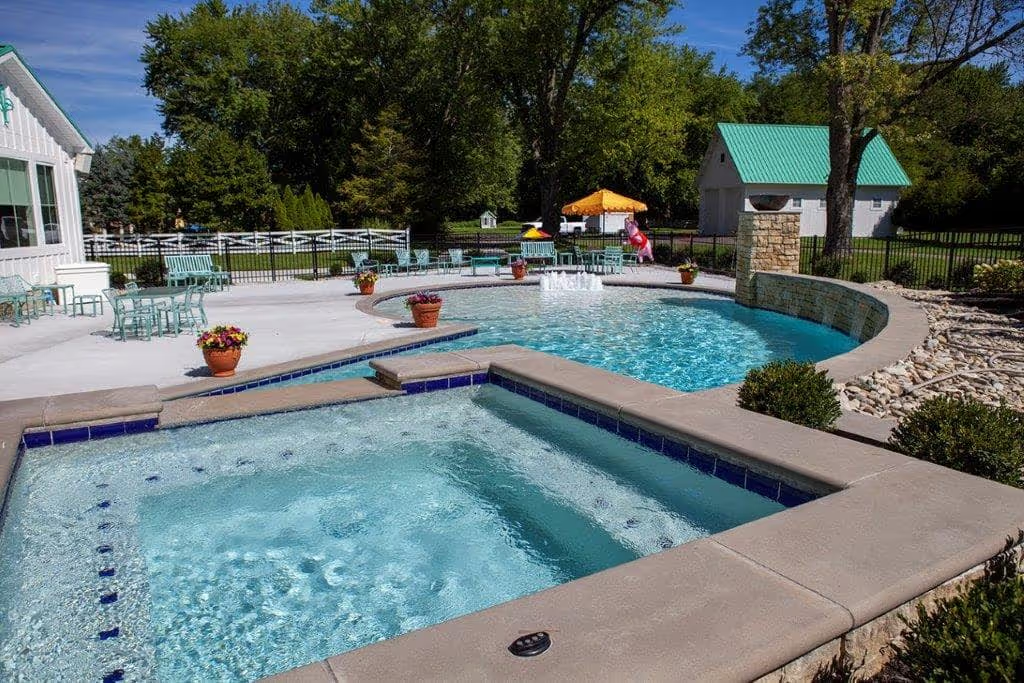- Stone Center
- Blog
Flagstone vs. Bluestone: What’s the Difference?
23/7/2025
2/21/2025
Flagstone vs. Bluestone: What’s the Difference?

Flagstone and bluestone are both large, flat stones that offer supreme durability, rich colors, and a natural stone look for versatile implementation. And while both are popular when designing an outdoor space, there is a difference between them, and the best one for you largely depends on your unique project.
So, how do you know which one is best? Should you go for the rustic charm of flagstone or the bold elegance of bluestone? To help you understand the difference, our expert team at Stone Center is here to break down all the information you need to know.
What Is Flagstone?
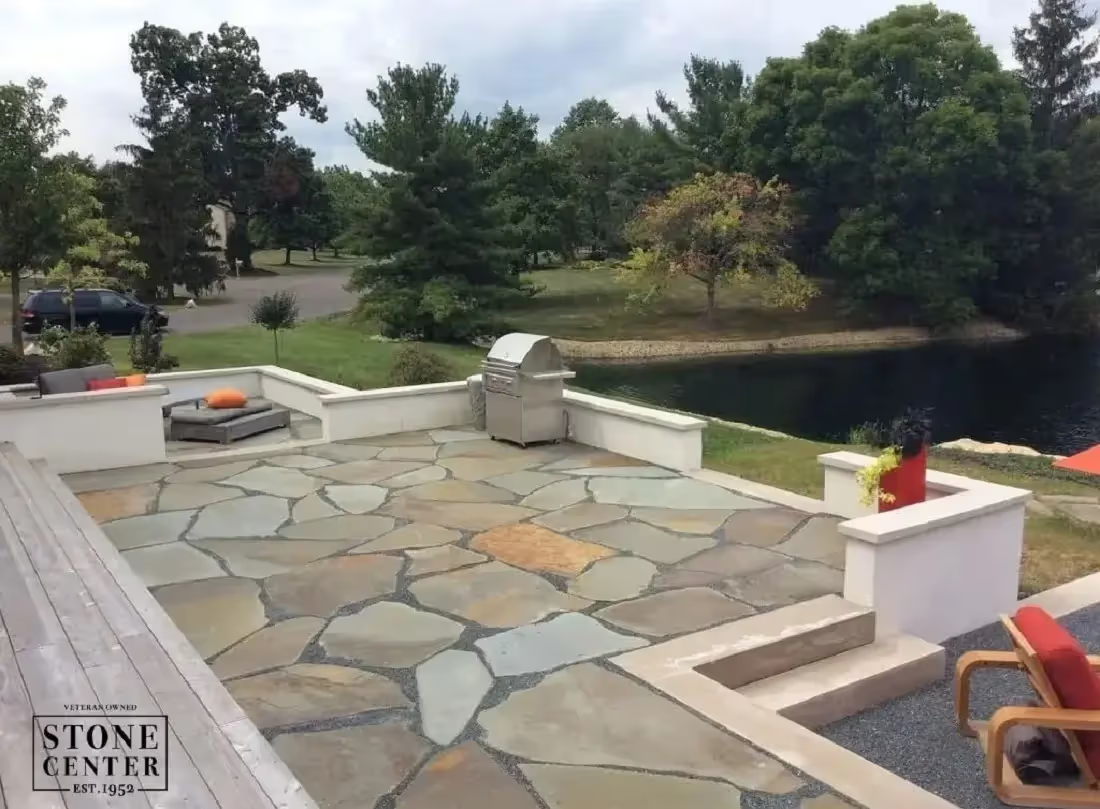
To help differentiate in the debate between flagstone vs. bluestone, we need to define both. Flagstone is described as a sedimentary rock that's typically composed of sandstone bound together by minerals, including silica, calcite, and iron ore. It has a flat, natural shape that makes it perfect for walkways, flagstone patios, and walls, while its wide range of colors — brown, gray, gold, and blue — allows it to complement different home designs.
Want to dive deeper into flagstone’s definition, formation, and main properties? Check out our in-depth flagstone guide to learn even more!
What Is Bluestone?

Did you know bluestone is a type of flagstone? It's true! Bluestone is a form of flagstone and is characterized as a sedimentary rock that's formed through the fusing of particles deposited by rivers, oceans, and lakes. Bluestone usually has a moderately textured surface.
Unlike the vast range of flagstone colors, bluestone typically comes in bluish and gray shades but can have more full-color tones mixed in. Along with these bluish and gray shades, it tends to offer a sturdier surface and comes with natural cleft and select grades. A natural cleft isn't common.
Due to its durability, it tends to be more resilient against the elements for a weather-resistant finish. Everyone loves a weather-resistant natural stone, but know that these perks come at a higher cost.
Flagstone vs. Bluestone: Key Differences
To fully answer whether flagstone and bluestone are the same, let's break down the differences in more detail.
Appearance
There's a reason using bluestone or flagstone is so popular in landscaping — they both offer a beautiful natural stone finish that adds a stunning touch to any outdoor living space.
In terms of appearance, bluestone, formed from particles deposited uniquely, offers a rich blue and gray color that stands out in an outdoor landscape. Typically, bluestone is regarded as more stable and stronger than flagstone, yet comes in fewer shade ranges.
Flagstone, on the other hand, is a more neutral natural stone. With this in mind, it tends to better blend in with the landscape, offering a more neutral accompaniment to your design. Flagstone types and colors, such as brown, gray, gold, and blue, make it ideal for a range of different home designs.
Durability & Weather Resistance
Durability is another factor to consider when deciding between flagstone or bluestone. Bluestone is typically regarded as the stronger of the two. It’s known to hold in place better than flagstone and is naturally dense. Bluestone is the superior choice if you live near harsh weather conditions. Whether you deal with extremely hot summers or bitterly cold winters, bluestone is better built to withstand these elements.
Flagstone, on the other hand, is a flat stone and may not be as sturdy as bluestone, but it still has decent durability. A sedimentary rock formed like flagstone is weather-resistant in its thick, compact variations - something to consider when investing in this natural stone. It performs well in moderate climates and, when properly sealed, can resist moisture absorption and temperature changes effectively.
Best Use Cases of Flagstone and Bluestone
Flagstone is perfect for natural, rustic landscapes, so it’s the perfect paving stone choice for garden paths, walkways, and patios. Its irregular shapes and earthy tones blend seamlessly into outdoor spaces. Best suited for low-traffic or informal areas, flagstone’s textured surface adds character while needing minimal leveling.
On the other hand, bluestone is a top choice for modern, high-traffic areas like patios, driveways, and courtyards. Its dense, durable composition ensures longevity, while its consistent thickness creates a polished look. Additionally, bluestone tends to be slightly more slip-resistant due to its rough texture, which is great for around a pool area. Its weather resistance makes it ideal for extreme climates.
Maintenance
Maintenance is essential to maintaining the beauty of any natural stone, yet some need more than others, which can take up a lot of your time.
Bluestone tends to need more maintenance than flagstone when comparing the two stones. Since bluestone is more porous, it's easier to stain. That being said, it’s still easy to clean, so scrubbing the surface with water and dish soap weekly or bi-weekly will do the trick.
Flagstone, on the other hand, tends to be less porous than bluestone, thus requiring less maintenance over the years. That being said, it's still important to clean it to avoid stains from building up.
Cost
Now to get to the detail you've all been waiting for — the bluestone vs. flagstone cost.
Typically, flagstone isn’t considered an inexpensive material. Depending on where you source it from, the type, cut, and color, flagstone cost ranges from $15 to $25 per square foot, coming in at around $300 per ton to over $500.
Bluestone comes at a premium price, typically ranging from $25-$35 per square foot and $450-$700 per ton. Its higher cost is due to its limited regional availability, durability, and refined appearance, making it a sought-after material for high-end landscaping projects.
Which Is Better for Your Project?
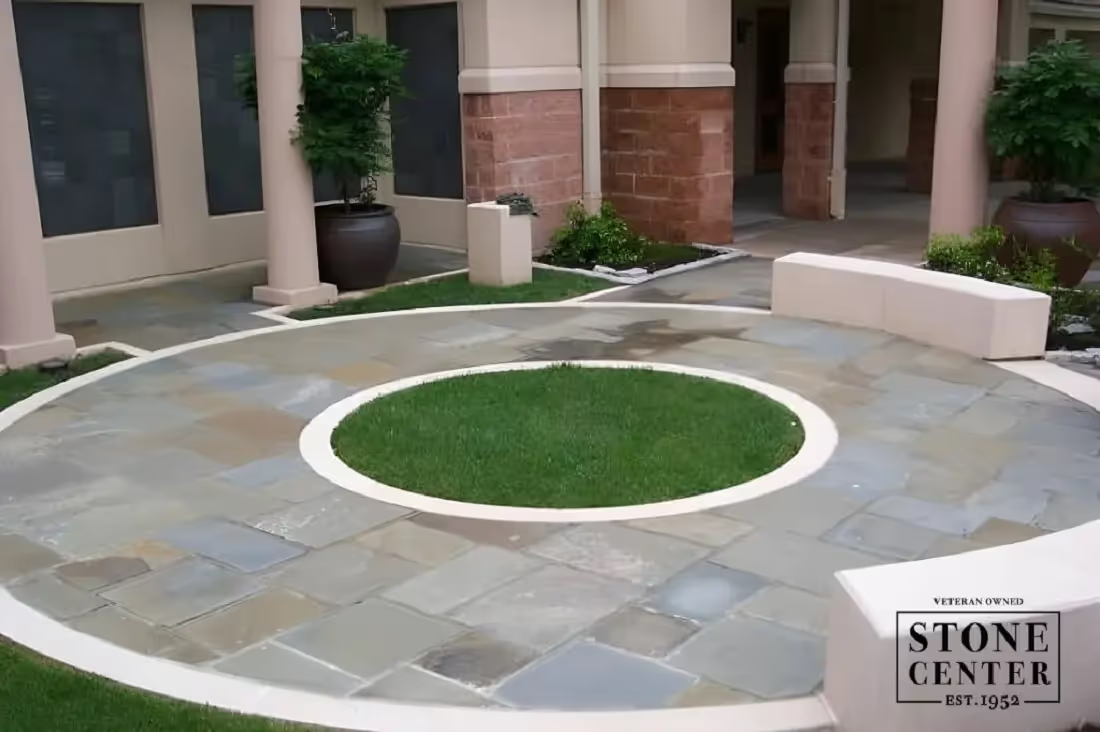
So, now that you know the difference between bluestone and flagstone, which is right for you? Considering that bluestone itself is a form of flagstone, you truly can't go wrong with either material. The stone that’s best for you depends on your unique project, design, and needs.
Bluestone is a stronger, more durable stone, so it’s ideal for high-traffic areas and extreme weather conditions. Its blue-gray tones give outdoor spaces a classic, elegant look, and its moderately textured surface adds slip resistance, making it great for pool areas.
Flagstone, on the other hand, offers more variety in colors and textures, making it a versatile choice for those looking for a natural, earthy aesthetic. It’s well-suited for rustic landscapes, patios, and pathways, and its natural ridges help with traction and water drainage.
Verdict: If you want a specific blue-gray tone and extra durability, bluestone is the better choice — but if you’re looking for more color variety and affordability, flagstone is the way to go. It all depends on your project’s needs.
What Are Natural Stone Alternatives?
While bluestone and flagstone are popular choices for outdoor landscaping, there are other natural stone options to consider as well. Let's explore some of the alternatives for your project.

Limestone vs. Bluestone vs. Flagstone
When comparing bluestone vs. limestone, it's important to note that while bluestone is typically more durable and slip-proof than limestone, limestone is often more affordable.
It's worth considering limestone vs. bluestone for steps as bluestone may be the better choice due to its slip resistance. When it comes to limestone vs. bluestone pool coping, both bluestone and limestone can be suitable choices depending on personal preferences, but bluestone may be more slip-resistant.
Finally, when we explore the cost of limestone vs. bluestone, limestone is often the most affordable of the three options, with bluestone typically being the most expensive.
Bluestone vs. Slate vs. Flagstone
When comparing bluestone and slate, slate is generally considered to be less durable and more prone to chipping and cracking, but it can still be a great choice for patios, walkways, and other surfaces. While both stones offer a natural look, bluestone typically has a more uniform color, and slate can vary in color and have a rich texture. When it comes to cost, bluestone is typically more expensive than slate.
Choosing between flagstone and slate? Explore our in-depth guide to compare flagstone vs. slate in terms of durability, aesthetics, and best uses!
Travertine vs. Bluestone vs. Flagstone
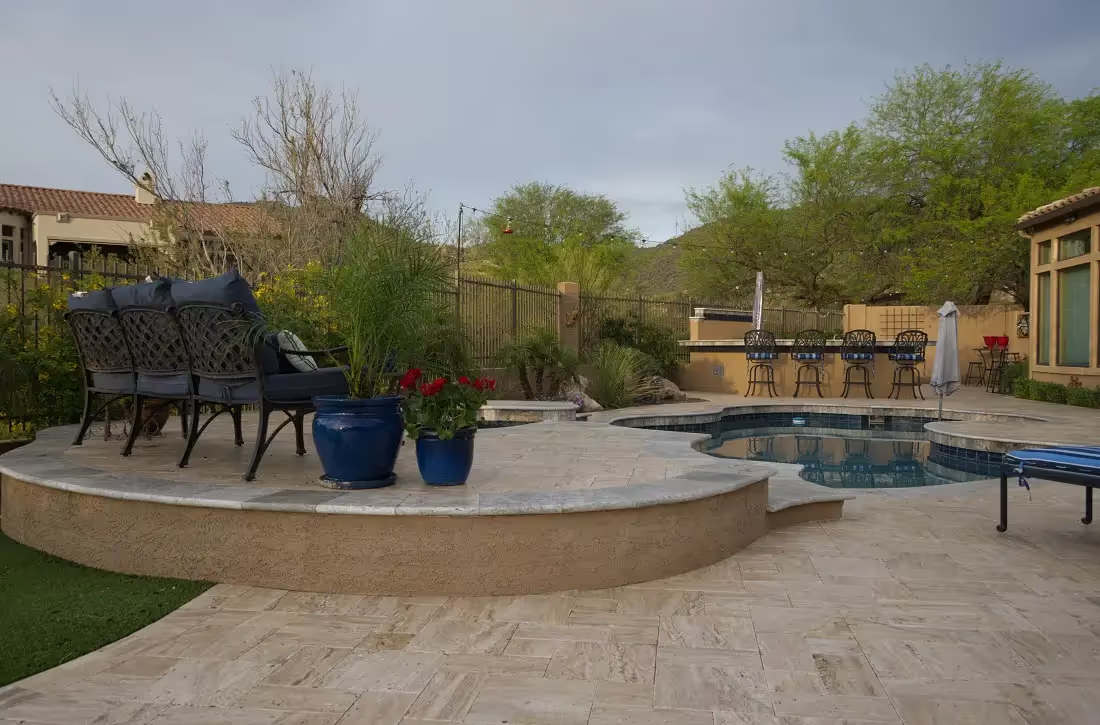
Although bluestone is generally known to be stronger and more resilient than travertine, the stony texture and earthy colors of travertine can add a unique touch to your design. The versatility of travertine for landscaping and its durability also make it a great choice for outdoors, walkways, steps, and pool coping.
Plus, it's important to consider the cost when making your decision. Travertine is typically more expensive than both bluestone and flagstone but can be an excellent choice if you're looking for a unique design with added warmth and character.
Making the Right Choice for Your Project
Choosing between flagstone and bluestone comes down to your design vision, durability needs, and budget. Bluestone offers superior strength and weather resistance, while flagstone provides more color variety and a rustic charm — both are excellent choices for patios, pool decks, and walkways.
Despite all of this information, you may still feel unsure about which stone is best for your project. Don’t stress! Stone Center, Ohio’s trusted natural stone supplier, is here to help. Our experts will guide you through material selection, pricing, and installation to ensure the perfect fit for your project. We’re excited to hear about your upcoming project and can guide you in the right direction. Get in touch with us today for expert advice on your outdoor landscaping needs!
FAQ
.avif)
Jon, the owner of Stone Center, is a knowledgeable expert in natural stone products, specializing in various types of stone for landscaping and architectural projects. Passionate about promoting the beauty and versatility of natural stone, Jon aims to use these blogs to inspire readers with creative ideas to upgrade their homes.
How much does it cost to get a stone restored?
How much you end up spending to restore stone varies on the type of stone, the technique, and the stone’s current condition. Stone in good condition will cost less to restore, whereas stone that has a lot of wear and tear may require a longer restoration.




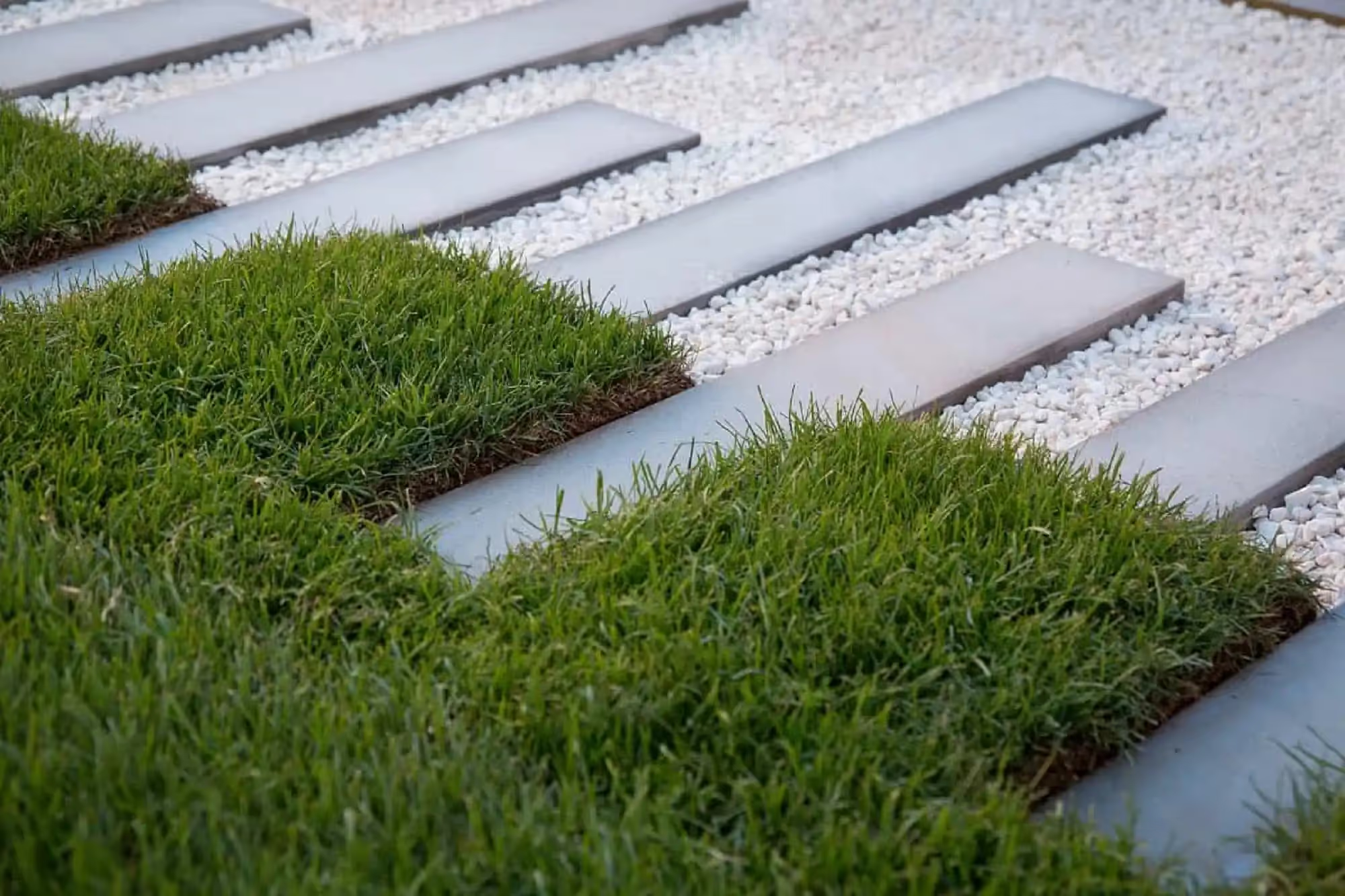

.webp)
.avif)
.avif)
.avif)
